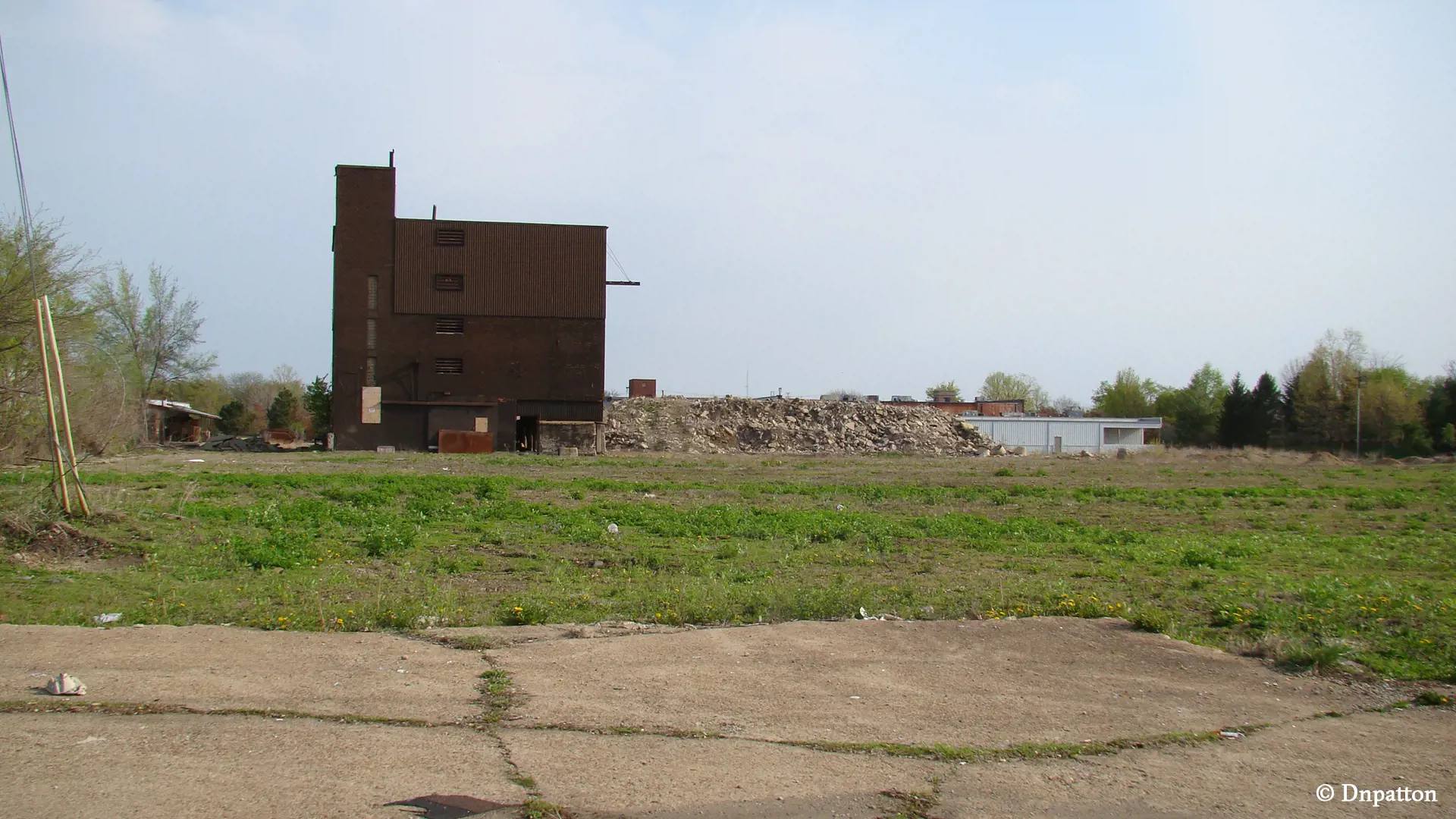UPDATE 6 August 2020: The Government is currently consulting on whether all permission in principle by application “consents” that are on brownfield land should also be automatically recorded in Part 2 of the Brownfield Land Register. This is linked to the publication of a national brownfield map that will show “all” brownfield sites that are suitable for housing.
The Planning for the Future consultation says that the Government is reviewing the role of Brownfield Land Registers; local plans drafted under the proposals within that consultation document would be digital and would grant permission in principle for some sites. Digitisation of planning and machine-readable polices are also intended to allow automatic screening or planning appraisal of ‘binary matters’.
UPDATE 15 June 2018: The Government has published updated guidance on permission in principle – notably the application procedures for PiP and technical details consent. The complete up-to-date guidance is available here.
UPDATE 2 January 2018: The Town and Country Planning (Fees for Applications, Deemed Applications, Requests and Site Visits) (England) (Amendment) Regulations 2017 come into force on 17 January 2018. The amendment Regulations provide details of new and revised planning application fees, which will apply to permission in principle and technical details consent applications.
‘How to use the brownfield land register template’ was added to DCLG’s ‘Brownfield land registers data standard’, on 10 October 2017.
UPDATE. 28 July 2017: The Government has now published planning practice guidance regarding brownfield land registers and permission in principle
A new route to planning permission for housing-led development on some - but not all - previously developed sites
What are the headlines of the Housing and Planning Act 2016’s new secondary legislation for brownfield land registers - and for ‘permission in principle’ for housing-led development on some register sites?
New regulations mean that all local planning authorities (LPAs) must publish a brownfield land register (BLR) before the end of 2017.
Part 1 of the BLR will be for sites categorised as ‘previously developed land’ (as per the National Planning Policy Framework’s glossary definition), that also satisfy a long list of complex criteria relating to ‘suitability’ and ‘availability’ for new homes, and the ‘achievability’ of housing development – see further questions and answers below.
And a new, separate Order means that sites entered in Part 2 of the same register will be granted ‘permission in principle’ (PIP) for the housing-led development described in each individual entry (see our previous blog for details of the legislative background).
These are the combined effects of the new secondary legislation that follows on from the Housing and Planning Act 2016’s ss150 and 151) - the Town and Country Planning (Brownfield Land Register) Regulations 2017 (BLR Order) and the Town and Country Planning (Permission in Principle) Order 2017 (PIP Order). Both have been made and laid, and come into force in mid-April (on 16 and 15 April respectively).
Once a Part 2 site has PIP, and ‘technical details consent’ (TDC) has subsequently been applied for and granted, the site has an implementable planning permission (again, see our previous blog).
How can sites be included in brownfield land registers?
Previously developed land that also satisfies a long list of criteria must be included in Part 1 of a BLR; that land will also be listed in Part 2, if the LPA decides to ‘allocate it for residential development’, having followed a series of required procedures.
Subject to some exemptions (see below), LPAs will have to include a previously developed site in their register’s Part 1, if it is:
1. 0.25 hectares or larger, or capable of supporting at least 5 dwellings;
2. ‘Suitable’ – i.e. allocated in a development plan document (e.g. a local plan), benefiting from planning permission or PIP for residential development, or the LPA considers it suitable for residential development having considered any adverse impact on the natural environment, the local built environment (including heritage assets), local amenity and any ‘relevant’ representations (i.e. from third parties);
3. ‘Achievable’ – i.e. based on publically available information and any relevant representations, the authority’s opinion that the site will come forward within 15 years; and
4. Available – either all the owners of the site, or the developer in control of the land have expressed an intention to develop (or sell, in the case of an owner(s)*) the site within the 21 days before the entry date on the register, or the LPA considers that there are no ownership or other legal matters that might prevent residential development (again, based on publically available information and any relevant representations).
The LPA may also choose to include sites smaller than 0.25 hectares and not capable of supporting dwellings.
Before Part 1 is published, LPAs may also chose to ‘carry out procedures (including consultation) as they see fit’, and if they do so, they must take into account representations received.
Sites in Part 1 of the BLR ‘must’ then be included in Part 2, if the LPA has ‘decided to allocate the land for residential development’; no indication is given of any suggested decision-making procedure. So, the actions of a developer or owner(s) can lead to inclusion of a site in Part 1 of the BLR, but not in Part 2 - and there is no mention of any mechanism, or right of appeal that could ‘force’ an LPA to consider the merits of including a site in Part 2, and thus grant it PIP.
What must each BLR site entry include?
Amongst the information that must be included on each entry in the register is the scale of any non-housing development. It is not clear whether it is intended that the amount of floorspace has to be stated, or whether the ‘scale’ of development would have to be as defined in the Town and Country Planning (Development Management Procedure) (England) Order 2015 (DMPO) for the purpose of a reserved matters application (i.e. ‘the height, width and length of each building proposed within the development in relation to its surroundings’). If it were to be the latter, this seems to be at odds with the intention of PIP, for it to be a simple ‘red line’ decision.
What are the procedures that must be followed before land may be entered in Part 2 of the BLR?
Before entering a site in Part 2 of a BLR, the LPA must:
1. Display a site notice for at least 21 days;
2. Display specified information on their website (the details of which are set out in Art 6(4) of the BLR Order);
3. Take into account representations received, having served notice or publicised the intention to include land in Part 2;
4. Undertake specific notification/consultation requirements for sites within 10m of railway land, or where the LPA considers that residential development would constitute development that requires consultation with the county planning authority, the Mayor of London or other parties (as identified in the table in Schedule 4 to the DMPO); and
5. Serve notice on a neighbourhood forum or parish council, where they have previously requested to be notified.
Is there any previously developed land that cannot be granted PIP in a BLR?
Yes.
Where the residential development of land might be likely to have significant effects on the environment under Schedule 1 environmental impact assessment (EIA) development, that land cannot be included in Part 2 of the BLR. However, we would question whether this situation would arise given the non-residential categories of development that constitute Schedule 1 EIA development.
Land that might be Schedule 2 EIA development if developed for housing cannot be entered in Part 2 unless the LPA has the information required to support a screening opinion and has specified the maximum number of dwellings that the land can support, and this information - together with any other relevant information - is sufficient for the LPA to adopt a screening opinion that concludes that the potential residential development will not be EIA development.
Similarly, the LPA may include land where the maximum net number of dwellings might be considered ‘habitats development’, if it has specified the maximum number of dwellings that the land can support and is satisfied that development limited to that size would not have an effect on a European site (as defined in the BLR Order).
At what point is PIP granted?
PIP is granted when the BLR takes effect and otherwise, when it is revised to include the land in question (see s59A(4) of the Town and Country Planning Act (TCPA) 1990).
The 73 councils that have piloted brownfield registers are likely to be quicker off the mark in publishing the now-required versions, as they will only need to check if the sites in their beta registers meet all of the legal requirements, decide whether additional sites should be added, and carry out the necessary procedures before formally publishing their BLR.
Can PIP be granted for the conversion of buildings to housing-led development?
Yes; PIP development includes material changes of use.
What happens once PIP is granted via a brownfield land register?
Following PIP, the developer or landowner(s) has five years to seek TDC, the approval of which will mean that the site has full planning permission.
The legal procedure for TDC is set out in s70 (2ZZA-2ZZC) of the Town and Country Planning Act 1990.
National planning practice guidance (PPG) is likely to be updated to provide more details on process, most probably with guidance not dissimilar to that set out early last year in DCLG’s ‘Technical consultation on implementation of planning changes’, outlining the nature and scope of TDC applications (see our previous blog once again, for a summary). Update: guidance is available on both PIP and the BLR.
How long will sites stay on BLRs?
LPAs are required to review their BLRs every year, and where sites no longer meet the required criteria they must be removed. But the dwelling range for each site, and the scale of development, cannot be altered as part of the annual review.
It is not clear whether a site must be removed from Part 2 for a short period after its PIP expires and then added back in, in order to trigger a further PIP. Given that a site must be capable of development within 15 years to be considered available, one can conclude that there will be a mechanism to ‘repeat’ a BLR PIP after one for the same site has expired.
Has all the legislation necessary for this type of PIP to lead to a planning permission been made/ laid, ready to come into force in mid-April – and is there any guidance yet?
No, not yet: yes for a BLR PIP, but not for TDC. Update: all the necessary legislation is in force for a BLR PIP, and guidance is available. The only missing item is a standard TDC application form.
It is very likely that PPG updates will be published by/ in mid-April (which LPAs would have to ‘have regard’ to, according to 59A (12) TCPA 1990). This guidance will, we hope, be particularly helpful in providing examples of exactly what the ‘publically available information’ is, that will inform: whether or not a site is suitable, available and achievable in providing new homes; indicate how impact on heritage assets is to be considered in the absence of a detailed design; and how the development plan might influence the time limit of PIP.
Subject to the yet-to-be-published Government response to consultation responses received on PIP and TDC in last year’s ‘Technical Changes’, we expect the PPG changes to largely reflect the Government's intentions set out at the time.
Will BLR PIP become commonplace?
We don’t know yet.
LPAs are required to include certain sites in Part 1 of a BLR, but they can then decide whether or not to grant PIP for those sites. Most LPAs will have a strategic housing land availability assessment (SHLAA) that they can use, or update and then use, to meet the statutory duty and timetable for Part 1 of the register.
There is however then no statutory requirement to consider whether or not to ‘move’ a site to the register’s Part 2. In the absence of an application fee, we would suggest that LPAs are unlikely to want to/ be able to resource such decisions unless either relating to council-owned land, or to sites benefitting from external funding (e.g. the Starter Homes Land Fund).
Thus even where owners and developers provide the necessary information to promote a site's ‘move’ to Part 2, there is no mechanism to ‘force’ the LPA to grant PIP via the BLR. Pro-PIP LPAs might consider assessing potential Part 2/PIP sites as an appropriate way of using receipts from the July 2017 (loosely) ring-fenced increase in planning application fees, but where councils are currently struggling to meet performance criteria for the determination of planning applications, this is less likely.
Some owners and developers might consider seeking judicial review (JR) of a decision not to move a site to Part 2 of the BLR, but where no assessment has taken place (i.e. a site has not been considered by the LPA for PIP at all), it is not easy to see where any statutory duty, i.e. the correct procedure, would not have been followed – this being a requirement of JR.
Will BLRs, PIP and TDC boost housing land supply and the delivery of new homes?
Overall, BLR PIP and the subsequent TDC could ultimately make a not insignificant contribution to the various ways of obtaining planning permission for both the principle and detail of new housing projects - of all sizes - on brownfield sites.
But in a world of cash-strapped planning departments, while BLRs will have to be prepared and published within the next 9 months or so, the sites that are included in their Part 2s may be few and far between – at least in this initial round of registers.
*Note that in the BLR Order, 'owner' only includes a party with at least a 15 years leasehold interest in the land, i.e. significantly longer than the 7 year period that requires a tenant to be notified of a planning application.










